Don't wanna be here? Send us removal request.
Text
B2B lead generation any industry
0 notes
Text
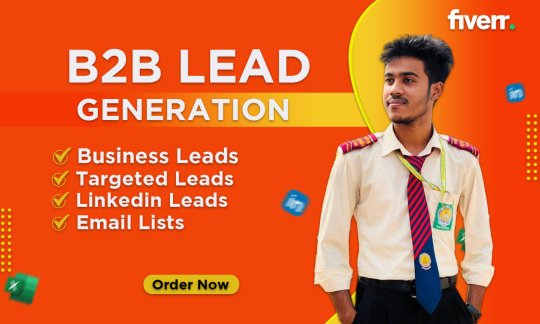
#virtual assistant#b2b lead generation#b2b services#lead generation#business leads#business#i sell content#services
0 notes
Text
what is lead generation
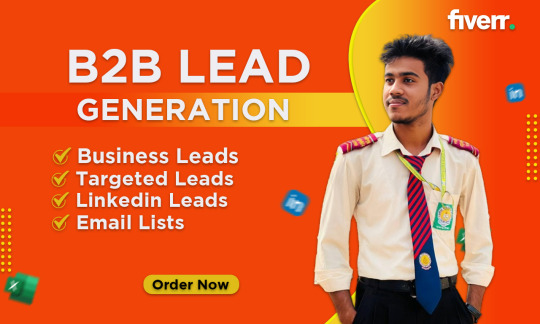
Lead generation is the process of attracting and converting potential customers or "leads" into someone who has indicated interest in your company's product or service in some way, shape, or form. It involves capturing the interest of potential customers and nurturing them through various strategies until they are ready to make a purchase decision. Lead generation can take many forms, including:
Content Marketing: Providing valuable content such as blog posts, videos, ebooks, or webinars that attract potential customers and encourage them to provide their contact information in exchange for the content.
Email Marketing: Sending targeted emails to prospects with the goal of nurturing them and moving them through the sales funnel.
Social Media Marketing: Engaging with potential customers on social media platforms to build relationships and drive them to take action, such as signing up for a newsletter or downloading a resource.
Search Engine Optimization (SEO): Optimizing your website and content to rank higher in search engine results pages, making it easier for potential customers to find you online.
Paid Advertising: Using online advertising platforms such as Google Ads or social media ads to target specific demographics and drive traffic to your website or landing pages.
Networking and Events: Attending industry events, trade shows, or networking events to connect with potential customers and generate leads through face-to-face interactions.
Referral Programs: Encouraging satisfied customers to refer their friends, family, or colleagues to your business in exchange for incentives.
Overall, lead generation is a crucial aspect of marketing and sales efforts for businesses of all sizes, as it helps to identify and cultivate potential customers, ultimately leading to increased revenue and business growth.https://tinyurl.com/2dyndedw
#lead generation#b2b lead generation#b2b services#b2bsales#b2bmarketing#leadgeneration#virtual assistant#business growth#business leads#Construction#Retail & wholesale#targeted leads#targeted b2b lead generation#highly targeted b2b lead generation#accurate targeted b2b lead generation
0 notes
Text
What does a business lead?

What does a business lead?
A business lead typically refers to a person or organization that has shown interest in a company's product or service and has the potential to become a customer or client.
In a broader sense, a business lead can also refer to any individual or entity that a company identifies as a potential opportunity for generating revenue or building a business relationship. This could include prospective customers, partners, investors, or other stakeholders.
Businesses often use various strategies and tactics to generate leads, such as advertising, marketing campaigns, networking, and referrals. Once leads are identified, companies typically engage in lead nurturing and follow-up activities to convert them into customers or clients.
How can I get leads for my business?
Generating leads for your business involves various strategies tailored to your industry, target audience, and resources. Here are some effective methods:
Content Marketing: Create valuable content such as blog posts, videos, or infographics that address your audience's pain points and interests, driving organic traffic to your website.
Social Media Marketing: Utilize platforms like LinkedIn, Facebook, Twitter, and Instagram to engage with your audience, share content, and run targeted ads to reach potential leads.
Email Marketing: Build an email list through opt-in forms on your website and nurture leads with personalized and relevant content, promotions, and updates.
Search Engine Optimization (SEO): Optimize your website and content for search engines to improve visibility and attract organic traffic from people searching for solutions related to your business.
Networking and Referrals: Attend industry events, join relevant online communities, and leverage your existing network to build relationships and gain referrals from satisfied customers or partners.
Lead Magnets: Offer valuable incentives such as ebooks, whitepapers, or free trials in exchange for contact information, effectively capturing leads interested in your products or services.
Paid Advertising: Invest in pay-per-click (PPC) advertising on platforms like Google Ads or social media platforms to target specific demographics and drive traffic to your website or landing pages.
Partnerships and Collaborations: Partner with complementary businesses or influencers to expand your reach and access their audience, potentially gaining new leads through co-promotion efforts.
Webinars and Events: Host online webinars, workshops, or offline events to showcase your expertise, educate your audience, and capture leads through registrations or sign-ups.
Customer Referral Programs: Encourage satisfied customers to refer others to your business by offering incentives or rewards for successful referrals, leveraging word-of-mouth marketing.
Tailor your lead generation efforts to your business goals, target audience, and available resources, regularly evaluating and optimizing your strategies for maximum effectiveness.
What is an example of a lead in business?
An example of a lead in business could be a person who visits a company's website and fills out a contact form requesting more information about a product or service. This individual has demonstrated an interest in the company's offerings and provided their contact details, making them a potential lead. The company can then follow up with this lead through email or phone calls, nurturing the relationship and guiding them through the sales process with the aim of converting them into a paying customer. visit here https://tinyurl.com/438v4et8
sharing for more details.
0 notes
Text
What is the job of a lead generation?
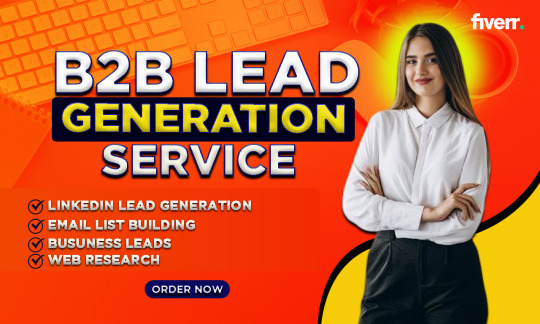
The job of a lead generation specialist or team is primarily focused on identifying and attracting potential customers or clients for a business's products or services. Lead generation is a crucial aspect of sales and marketing efforts, as it lays the foundation for building relationships with prospects and ultimately converting them into paying customers.
In the dynamic world of B2B lead generation, real estate stands out as a sector ripe with opportunities, and LinkedIn emerges as a formidable platform to harness its potential. With its vast network of professionals and targeted features, LinkedIn has become an indispensable tool for businesses seeking to generate high-quality leads. Let's delve into how real estate professionals can leverage LinkedIn to maximize their lead generation efforts.
Targeting the Right Audience
LinkedIn's robust targeting capabilities allow real estate professionals to narrow down their audience based on specific criteria such as industry, job title, company size, and location. For instance, if a real estate agency specializes in commercial properties, they can tailor their outreach to connect with CEOs, CFOs, or facilities managers of businesses looking for office spaces or retail locations.
Creating Compelling Content
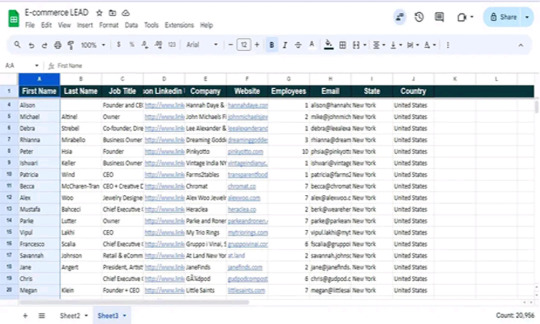
Content is king on LinkedIn, and real estate professionals can use this platform to showcase their expertise and establish themselves as industry thought leaders. By sharing insightful articles, success stories, market trends, and property listings, they can capture the attention of potential clients and position themselves as trusted advisors in the real estate landscape.
Engaging with LinkedIn Groups
LinkedIn Groups provide a fertile ground for networking and engagement within specific niches or industries. Real estate professionals can join relevant groups such as "Commercial Real Estate Investors" or "Residential Property Developers" to connect with peers, share valuable insights, and participate in discussions. By actively engaging with group members and offering valuable contributions, they can expand their network and attract potential leads.
Utilizing LinkedIn Ads
LinkedIn offers a range of advertising options tailored to B2B marketers, including sponsored content, sponsored InMail, and dynamic ads. Real estate professionals can leverage these advertising solutions to target their ideal audience with precision, whether it's promoting property listings, showcasing success stories, or offering exclusive deals. With LinkedIn's detailed analytics, they can track the performance of their ads and optimize their campaigns for maximum ROI.
Harnessing the Power of LinkedIn Sales Navigator
LinkedIn Sales Navigator is a powerful tool designed specifically for B2B lead generation, enabling real estate professionals to identify and connect with potential leads more effectively. With features such as lead recommendations, advanced search filters, and real-time insights, Sales Navigator empowers users to streamline their prospecting efforts and nurture relationships with key decision-makers in their target market.
Nurturing Relationships through Personalized Outreach
In the competitive real estate industry, personalized communication can make all the difference in converting leads into clients. LinkedIn's messaging features allow real estate professionals to craft personalized outreach messages tailored to the specific needs and interests of their prospects. By taking the time to understand their pain points and offering tailored solutions, they can build rapport and credibility, laying the foundation for long-term business relationships.
Conclusion
In the realm of B2B lead generation, LinkedIn emerges as a game-changer for real estate professionals looking to expand their client base and drive business growth. By leveraging LinkedIn's vast network, targeted features, and strategic approach, real estate professionals can unlock a wealth of opportunities and position themselves for success in the competitive marketplace. With the right tactics and mindset, LinkedIn can serve as a powerful ally in the quest for real estate lead generation excellence. visit here http://rb.gy/l1zxmw sharing for more details.
#lead generation jobs#fast typing on fiver#lead generation real estate#sales lead generation#b2b lead generation#b2bmarketing#b2bsales#b2b services#jobs#linkedin lead generation#2b2 lead generation#lead generation
0 notes
Text
9 Hidden Secrets of Lead Generation
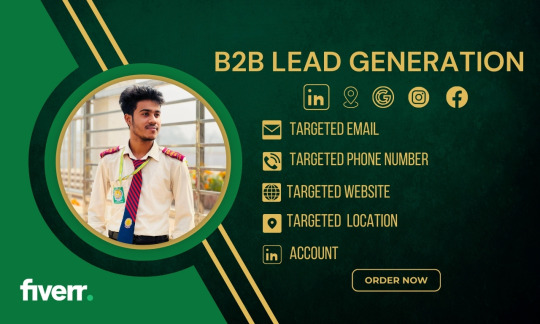
Have a clear CAMPAIGN OBJECTIVE – Just like with any marketing endeavor, businesses should start by clearly defining the goal of their lead generating campaign. This provides the campaign with a path that you may use to measure its development over time.
Contact all LEADS Directly – While a firm can benefit greatly from nurturing leads even after the lead generation process and the initial contact phase are over, leads still need to be engaged as soon as feasible. Remember that when a customer submits their information, they will all be in different points in the buying cycle.
CHEAP LEADS ARE NOT ALWAYS the BEST Lead generation – We think that not every lead adds the same amount of value to a business. One supplier's 1,000 leads may range greatly from another's in terms of origin, methodology, and quality. Even though it's in our tendency to desire more for less, it's preferable to generate one lead that turns into a sale as opposed to a million leads that yield no income at all!
OFFERING THE LEAD TOO MUCH to respond is not good Lead generation – In order to persuade a lead to submit accurate contact information during the "lead capture phase," an incentive is frequently needed. While they are occasionally required, lead generation strategies must strike the correct balance between customers who are primarily interested in the incentive and those who genuinely want to interact with your offering. For lead generation, all you should need is a white paper or
DEVELOP A FOLLOW-UP campaign in your lead generation STRATEGY – Contemporary consumers are time-constrained by nature and anticipate a response within minutes, not hours. A lead may be lost or converted depending on how long it takes the business to get in touch with it once it is captured.
lead generation Requires that you UNDERSTAND THE VALUE OF YOUR LEADS – The marketing message and origination strategy used in your lead generation campaign have a significant impact on the value of each lead that is generated. Leads can be found on both ends of the spectrum, but in order to allocate your budget more wisely, you must know which is which.
DON’T WASTE BUDGET ON lead generation of DUPLICATE LEADS – Numerous services "dedupe" lead supply in real time, ensuring that businesses aren't paying to speak with the same lead twice. This means that in order to avoid wasting money on a lead that has already been reached, duplicate contacts are eliminated.
When using lead generation PERCEIVE LEADS AS OPPORTUNITIES – Rather of holding the "shortsighted view" that a lead equals one sale, see each lead as having the potential to generate several opportunities for your company. These opportunities might include company referrals, repeat business, or even cross-selling.
SUPPORT LEAD GENERATION with HIGH QUALITY CONTENT – Good, shareable content boosts search engine rankings, which raises your website's exposure online and, as a result, attracts more people to it. Having interesting content on your website might be a major differentiator from the competition. In essence, this means that producing fascinating, educational, and engaging content will probably increase your credibility in your industry and, as a result, your website's ability to lead generation. please visit here http://surl.li/qzecu sharing for more details.
#lead generation#b2b lead generation#b2bsales#b2bmarketing#b2b#b2b services#data entry#fast typing on fiver#virtual assistant#leadgeneration#business growth#business ideas#fast typing job#data entry services#copy paste#typing#emailmarketing#crm#best digital marketing company#business
0 notes
Text
In today's fast-paced digital world, Data entry
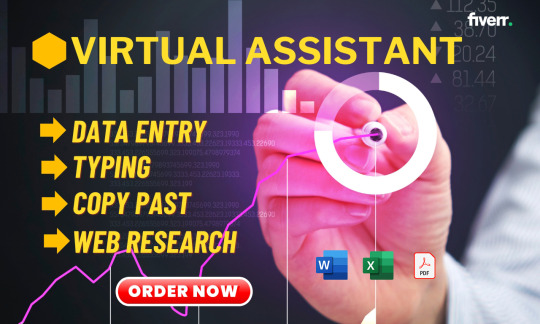
In today's fast-paced digital world, Data entry plays a crucial role in maintaining accurate records and enabling efficient business operations. From small startups to large corporations, organizations rely heavily on data entry to organize, analyze, and utilize vast amounts of information. In this article, we explore the significance of data entry and how it contributes to the success of businesses across various industries.
Data entry involves the process of inputting, updating, and managing data into a computer system or database. This can include entering customer details, financial transactions, inventory records, and more. While it may seem like a mundane task, accurate data entry is the foundation upon which informed decision-making and strategic planning are built.
One of the primary benefits of effective Data entry is the ability to maintain clean and organized data. With accurate and up-to-date information readily available, businesses can analyze trends, identify patterns, and make informed decisions to drive growth and profitability. Whether it's tracking sales figures, monitoring inventory levels, or managing customer information, reliable Data entry ensures that businesses have the insights they need to stay competitive in today's market.
Furthermore, efficient data entry processes contribute to increased productivity and cost-effectiveness. By automating repetitive tasks and streamlining workflows, businesses can minimize errors and reduce the time and resources required for manual Data entry . This not only saves valuable time but also lowers operational costs, allowing organizations to allocate resources more efficiently towards other essential aspects of their business.
In addition to enhancing productivity, accurate data entry also improves customer satisfaction and loyalty. Whether it's processing orders promptly, resolving inquiries efficiently, or personalizing marketing campaigns based on customer preferences, having access to reliable data ensures that businesses can deliver exceptional service and tailor their offerings to meet customer needs.
Moreover, in an era where data security and privacy are paramount, proper data entry practices are essential for safeguarding sensitive information. By implementing robust data entry protocols and encryption measures, businesses can mitigate the risk of data breaches and protect the confidentiality of customer and business data. This not only helps to build trust with customers but also ensures compliance with regulatory requirements and industry standards.
Despite advancements in technology, the human element remains crucial in Data entry . While automation tools can expedite certain processes, human oversight is necessary to verify accuracy, resolve discrepancies, and ensure data integrity. Investing in training and development programs for data entry professionals can further enhance their skills and proficiency, ultimately contributing to the overall efficiency and effectiveness of data management processes.
In conclusion, data entry plays a fundamental role in modern business operations, enabling organizations to maintain accurate records, drive informed decision-making, and enhance productivity. By implementing efficient data entry practices, businesses can unlock valuable insights, improve customer satisfaction, and mitigate risks associated with data security. As technology continues to evolve, the importance of accurate and reliable data entry will only grow, making it an indispensable component of success in the digital age. please visit here https://shorturl.at/rsuKR sharing for more details.
#data entry#typing#data entry services#data#fast typing job#fast typing on fiver#industry data#copy paste#data soong#pdf to word#excel#virtual assistant#data entry work#data entry projects#data entry company#data entry outsourcing#fast data entry
0 notes
Text
Do fast typing jobs pay well?

Do fast typing jobs pay well? Data entry jobs and transcription services are just two examples of the many available. If you want to find a variety of potential typing jobs in one place and have a fast typing skill and a high word-per-minute rate, freelancing on Fiverr is an excellent side gig. Which jobs demand the fastest rate of typing? If you can type quickly, you might enjoy one of these 13 jobs: typist. transcriptionist for medicine. editor for captions. clerk for data entry. Fast typing job for a transcriptionist. Interpreter. designer of websites. Is professional fast typing job ? Indeed, typing is a legitimate job. Typing jobs entail entering text and other data into a computer system using a computer keyboard. Data entry, audio recording transcription, and document typing are a few of these jobs. There are many places where typing jobs can be done, including call centers, offices, and online . Is typing a necessary skill for a job? WPMs should be included in the job skills section of resumes since they are regarded as technical skills. Those who work in jobs requiring a lot of typing should strive to type 65 words per minute fast typing job. Is typing fast a difficult skill to master? Saying how many words you can type in a minute is one way to quantify a hard skill, like having a fast typing job speed. Because you can acquire them on the job, in school, or in your personal life, hard skills are simpler to acquire. Usually, they are industry- or role-specific. Does typing for a living pay well? For those seeking flexible work that allows them to work from any location, freelance typing jobs are an excellent choice. The internet job market offers a wide range of fast typing opportunities, regardless of your interests in data entry, transcription, writing, translation, or tutoring. Is 120 wpm a fast typing speed? I have an average word per minute of 108/125, which shows how fast I can type. I hit my peak at more than 120 WPM. Did you know that the top 1% of typers in the world have a speed of 120 words per minute? This indicates that fewer than 1 out of every 100 Typists will be able to match your speed once you reach it. Which line of work demands a fast typing job skill? Data entry jobs: These roles typically require highly accurate text and number input. Legal: Applicants for these positions typically need to write and transcribe legal documents and correspondence. Writing: In addition to fast typing, these jobs frequently require creativity and critical thinking skills. Is typing a talent or a skill?
One practical skill that can be applied to a wide range of jobs is typing. You can communicate more effectively and convey written information more accurately if you have good typing skills. It is helpful to highlight your typing skills on your resume if you are applying for jobs that require regular fast typing job.
Is typing a career?
A professional who types text into a document from an electronic, print, or audio source is known as a typist. Although the job has changed, typists used to work with typewriters. please visit here
http://surl.li/qpwmf sharing for more details.
#typing#copy paste#data entry#data entry services#fast typing job#fast typing on fiver#make money fast#fast and furious
0 notes